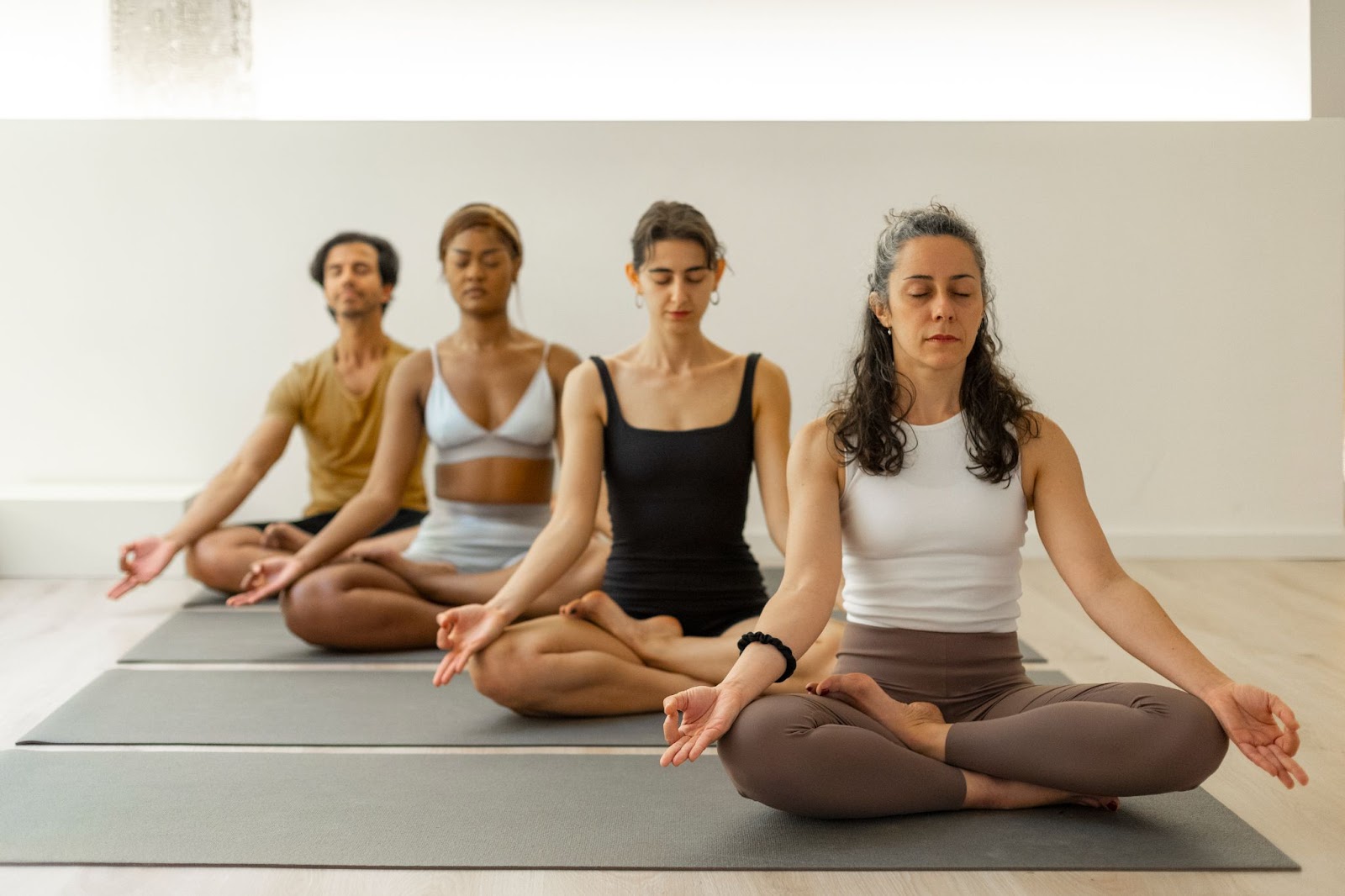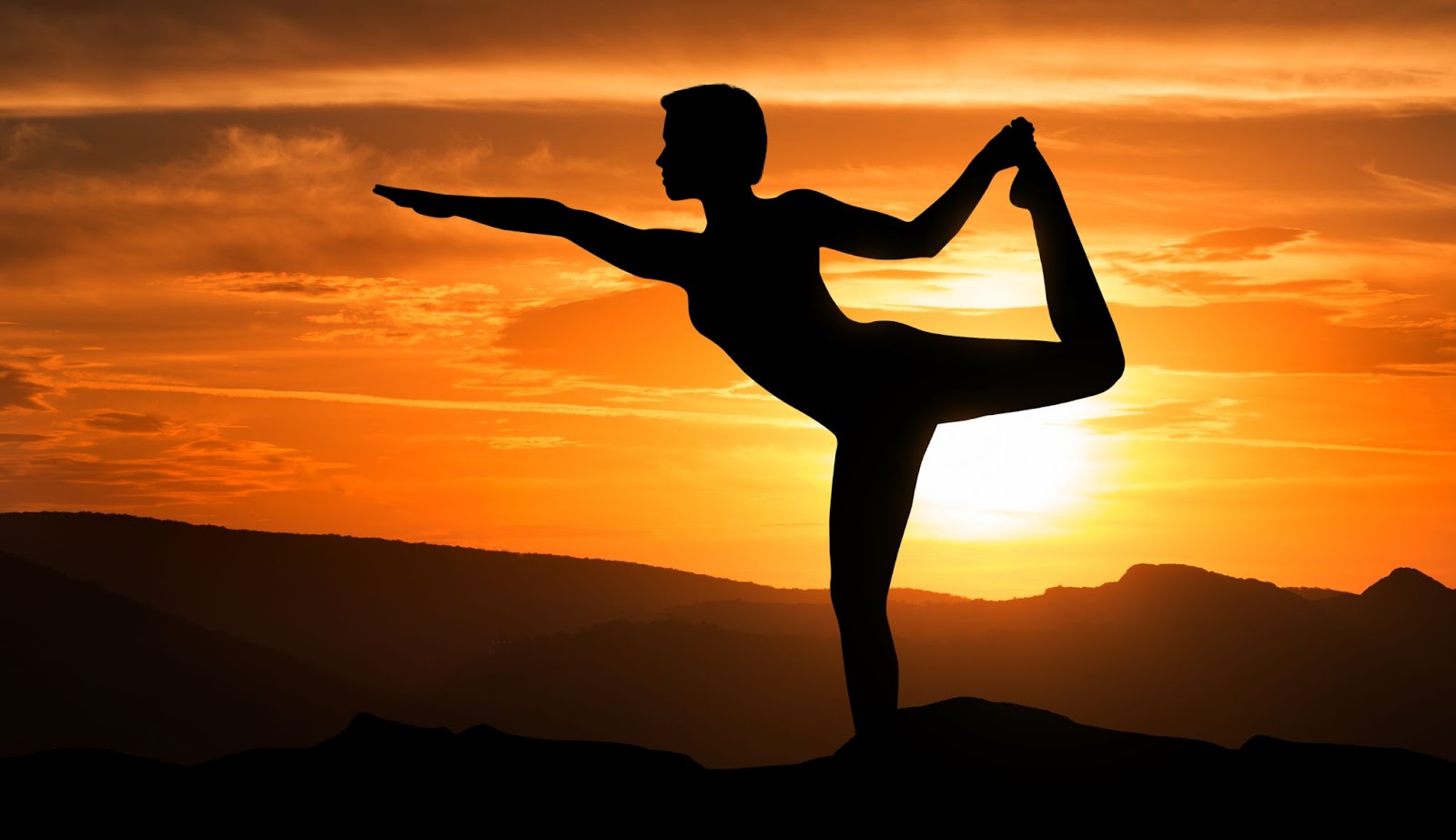Hatha Yoga: Uniting History, Practice, and Purpose for Mind-Body Harmony

The history of Hatha Yoga
Hatha Yoga originated in the 9th or 10th century CE within Tantric traditions and was formalized with the Hatha Yoga Pradipika in the 15th century. Initially a spiritual practice focused on balancing energy and awakening kundalini through postures (asanas) and breath control (pranayama), it was once exclusive to ascetics. It spread widely in the 19th and 20th centuries, thanks to figures like Swami Vivekananda and T. Krishnamacharya. Over time, it evolved from a spiritual path into a global fitness practice, influencing styles like Iyengar and Ashtanga Yoga. Today, Hatha Yoga supports both physical and mental well-being by blending ancient wisdom with modern needs.
The fundamentals of Hatha Yoga
The fundamentals of Hatha Yoga lie in creating harmony between the body and mind through physical postures, breath control, and mental focus. At its core, Hatha Yoga emphasizes balance, discipline, and self-awareness, preparing the practitioner for deeper states of meditation. Below are the key components that form the foundation of Hatha Yoga.
Asanas (Postures)
Physical postures are designed not only to enhance flexibility, strength, and body alignment but also to calm the mind. Each pose has a specific function, promoting energy flow, improving posture, and stimulating internal organs. Examples include Tadasana (Mountain Pose), Adho Mukha Svanasana (Downward Dog), and Savasana (Corpse Pose).
Pranayama (Breath Control)
Breath regulation is essential in Hatha Yoga, with techniques like Nadi Shodhana (alternate nostril breathing) and Ujjayi breath used to control life force energy, or prana. These breathing exercises help balance energy channels, reduce stress, and increase concentration.
Shatkarma (Cleansing Practices)
Shatkarma refers to six purification techniques aimed at detoxifying the body and clearing energy pathways. These practices, such as nasal cleansing or stomach cleansing, prepare the body for advanced yoga by promoting physical health and mental clarity.
Bandhas (Energy Locks)
Bandhas are internal locks that regulate energy flow within the body. They include Mula Bandha, Uddiyana Bandha, and Jalandhara Bandha. These energy seals enhance the effectiveness of both physical postures and breathing exercises.
Dhyana (Meditation)
Meditation is an integral part of Hatha Yoga, helping practitioners develop focus and inner awareness. Through mindfulness and concentration practices, the mind becomes still, paving the way for mental clarity and emotional balance.
Mudras (Gestures)
Mudras are symbolic hand or body gestures that guide the flow of energy within the body. They are often used during meditation and pranayama to enhance concentration and deepen spiritual practice.
Balancing Energies
The philosophy of Hatha Yoga revolves around balancing opposites, symbolized by the sun (Ha) and moon (Tha) energies. Through practice, the aim is to align these energies to achieve inner harmony and well-being.
Classical Hatha Yoga
Classical Hatha Yoga refers to the traditional practice rooted in ancient yogic texts, such as the Hatha Yoga Pradipika and the Gheranda Samhita. It emphasizes a holistic approach to well-being through physical postures (asanas), breath control (pranayama), cleansing practices (shatkarma), energy locks (bandhas), and meditation (dhyana). The primary aim of Classical Hatha Yoga is to purify the body and mind, balance energy, and prepare the practitioner for higher states of meditation and self-realization.
Unlike modern styles, Classical Hatha Yoga focuses more on internal discipline and spiritual growth, rather than just physical fitness. It seeks to align the practitioner’s mind, body, and breath, promoting inner harmony and awakening dormant energies like kundalini. The practice is methodical, emphasizing patience, self-awareness, and mindfulness through each posture and breath, making it a profound path toward mental clarity and inner stillness.

Philosophy of Hatha Yoga
The philosophy of Hatha Yoga focuses on achieving harmony between opposing forces, such as activity and rest, strength and flexibility, or energy and calmness. Rooted in ancient Indian traditions, it draws from Tantric and Yogic principles, emphasizing self-discipline and balance. The word “Hatha” symbolizes the union of two energies: “Ha” (sun) for active energy and “Tha” (moon) for passive energy, guiding practitioners toward physical health, mental clarity, and spiritual awakening.
Through posture and breath control, Hatha Yoga cleanses the body and mind, preparing for deeper meditation. Its goal extends beyond fitness, aiming for inner stillness and self-realization by mastering the body and breath. It promotes moderation and balance, encouraging strength without strain and focus without rigidity, fostering mindfulness and patience throughout the journey.
Who Can Benefit from Hatha Yoga?
Hatha Yoga’s inclusive nature makes it accessible to people of all ages, fitness levels, and lifestyles. Its combination of gentle physical movements, breathing techniques, and meditation offers diverse benefits, tailored to individual needs and goals.
Beginners
Hatha Yoga is ideal for those new to yoga, as it provides a slower pace with detailed guidance on posture and breath. It serves as an excellent foundation before advancing to more dynamic practices like Vinyasa or Ashtanga Yoga.
Individuals Seeking Stress Relief
With its emphasis on mindful breathing and relaxation, Hatha Yoga helps reduce stress, anxiety, and mental tension, making it beneficial for those with demanding jobs or lifestyles.
People with Physical Ailments
The gentle postures in Hatha Yoga are often recommended for people with chronic pain, mobility issues, or recovering from injury, as they promote flexibility, strength, and circulation without overexertion.
Older Adults
Its adaptable poses and slower pace make it suitable for seniors looking to maintain mobility, improve balance, and boost overall health.
Athletes and Fitness Enthusiasts
Hatha Yoga complements physical training by improving flexibility, posture, and muscle recovery, enhancing performance and preventing injuries.
Those Interested in Mental Well-being
The meditative practices in Hatha Yoga foster emotional balance, self-awareness, and mental clarity, making it helpful for anyone working on personal growth or managing stress.
Students of Spirituality
Hatha Yoga aligns with spiritual seekers who want to deepen their inner journey, preparing the body and mind for meditation and higher consciousness.

Whether one’s goal is physical fitness, stress reduction, or spiritual exploration, Hatha Yoga offers a holistic path to wellness. Its gentle yet profound practices encourage practitioners to cultivate patience, balance, and mindfulness, making it a valuable tool for navigating both the external and internal aspects of life.
Conclusion
Hatha Yoga, with roots in ancient Indian traditions, emphasizes the balance between body and mind through physical postures, breath control, and meditation. It evolved from a spiritual practice aimed at awakening energy and fostering inner harmony into a modern wellness tool that addresses both physical and mental well-being. Participate in Hatha Yoga at a resort in Seminyak today to promote mindfulness, self-discipline, and patience, offering benefits for beginners like stress relief, physical recovery, mental clarity, and spiritual growth. Its inclusive and adaptable nature makes it suitable for all, providing a holistic path to wellness by blending ancient wisdom with modern needs.
FAQs
How is Hatha Yoga different from regular yoga?
Hatha Yoga differs from regular yoga by focusing on slower, deliberate movements, breath control, and meditation, emphasizing balance between body and mind. While modern styles like Vinyasa prioritize physical fitness with faster flows, Hatha Yoga retains a more mindful, spiritual approach, making it accessible for beginners and those seeking mental well-being.
Why Hatha Yoga is the best?
Hatha Yoga is considered one of the best styles because it offers a well-rounded approach to both physical and mental well-being. Its slow pace and focus on alignment make it accessible for beginners, while still providing depth for experienced practitioners. By emphasizing balance through postures, breath control, and mindfulness, it promotes flexibility, strength, relaxation, and mental clarity. Hatha Yoga also nurtures inner calm and self-awareness, making it ideal not only for fitness but also for stress relief and emotional balance. Its versatility and focus on harmony between body and mind make it a sustainable practice for people of all ages and fitness levels.
What is the best time to do Hatha Yoga?
The best time to do Hatha Yoga is either early morning to energize the body and mind or evening to relax and unwind. Choose a time that fits your routine for consistent practice.
- Morning practice: ideally around sunrise, helps energize the body and prepare the mind for the day ahead. It enhances focus, boosts metabolism, and promotes a positive mindset.
- Evening practice: around sunset or early evening, offers a chance to unwind, release tension, and restore balance after a busy day. It promotes relaxation, improves sleep quality, and helps calm the mind.
How many times a week should I do Hatha Yoga?
For optimal benefits, practicing Hatha Yoga “3 to 5 times a week” is recommended. This frequency helps improve flexibility, strength, and mental clarity while allowing the body time to rest and recover between sessions. Beginners can start with 2–3 sessions per week and gradually increase as they become more comfortable. Consistency is more important than intensity for long-term results.
